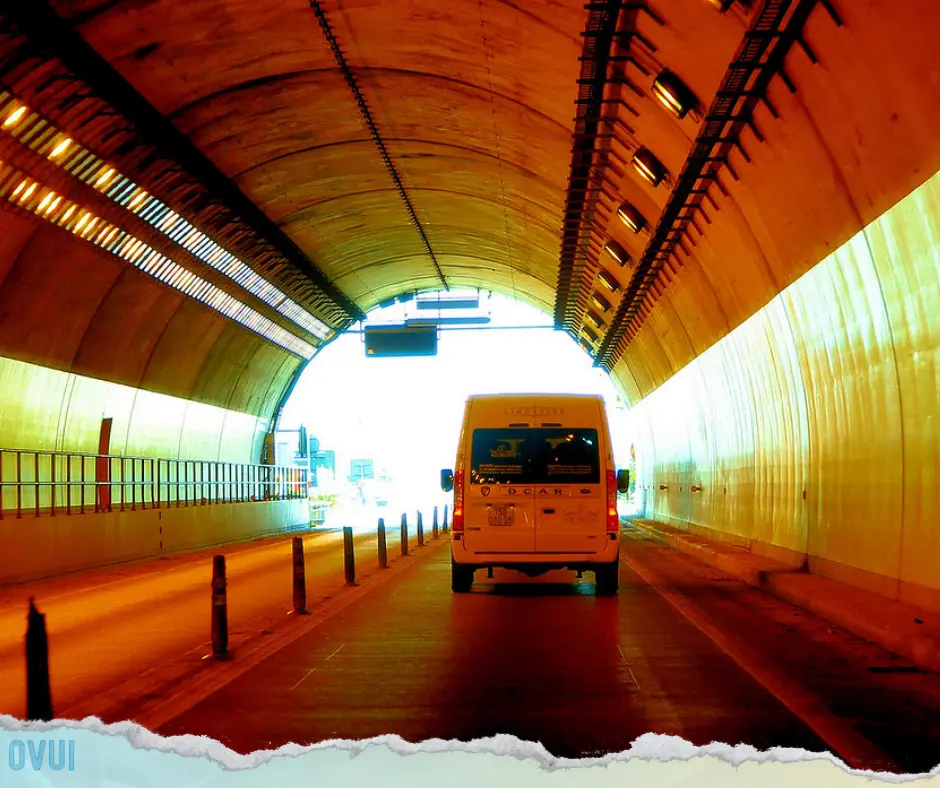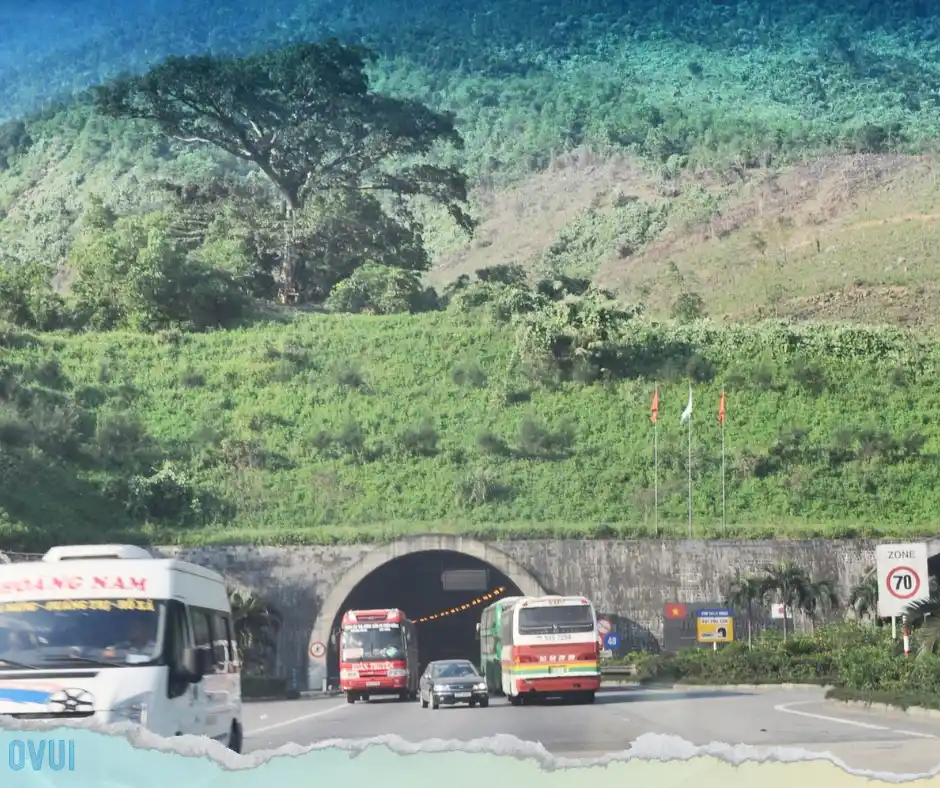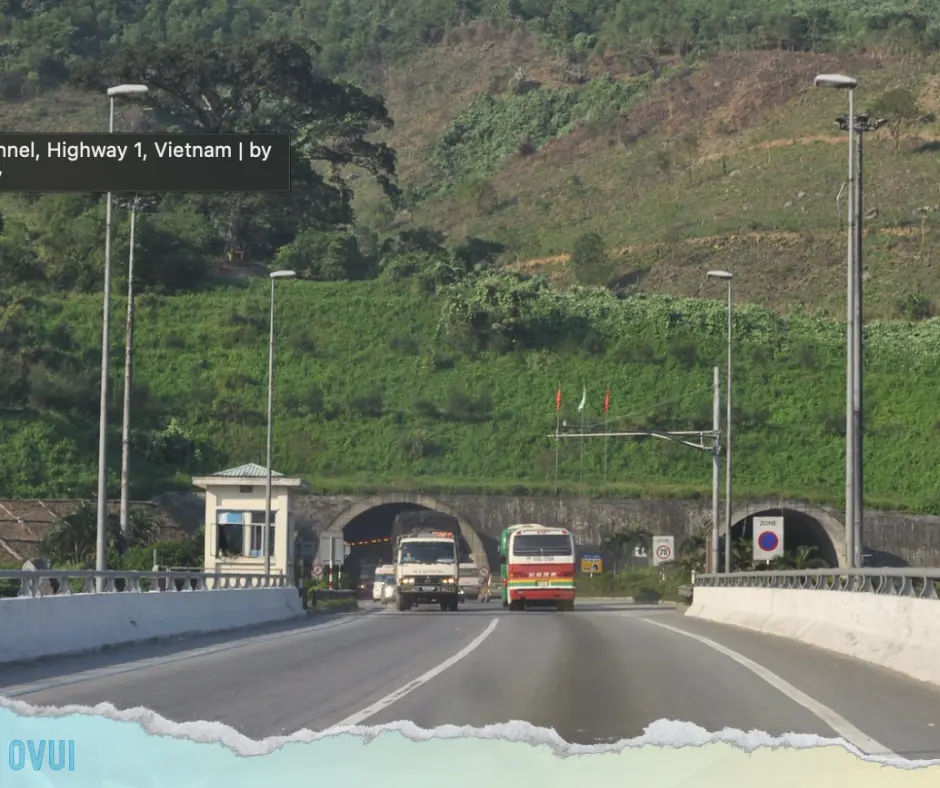Traveling Through Hai Van Tunnel: Key Route Between Da Nang and Thua Thien Hue By Ovui.com
The Hai Van Tunnel is a central part of Vietnam’s road transportation infrastructure. It connects Da Nang and Hue via the National Highway 1A, bypassing the dangerous Hai Van Pass. Travelers moving between these two key regions use the 6.28-kilometer tunnel daily, making it one of the busiest and most vital tunnels in the country.
From a local perspective — as someone born and raised in the central region, familiar with Da Nang, Hue, and Hoi An — the Hai Van Tunnel has transformed how locals and goods move along the North-South Transport Corridor. Operating under the Deo Ca Group, it welcomes over 10,000 vehicles per day.
Key Details
- Location: Connects Da Nang to Phu Loc District in Thua Thien Hue (Google Maps).
- Length: 6.28 km
- Opened: 2005
- Highway: National Highway 1A
- Tunnel Type: Road tunnel
- Toll system: Yes
Travel along the National Highway 1A has become more predictable, efficient, and much safer due to this infrastructure. Besides tourism, Hai Van Tunnel greatly supports commercial vehicles transporting goods. Freight trucks moving from southern to northern Vietnam formerly had to navigate the steep, winding Hai Van Pass. Today, they take a faster and flatter route through this modern tunnel.
Thanks to its connection and logical relationship with the North-South Railway and other key transport networks, it indirectly strengthens Vietnam’s economy.
For travelers, a ride through the tunnel now takes only 15 minutes, compared to 45 minutes or longer over the mountain pass—especially under harsh weather.
The Hai Van Tunnel has five defining relationships:
- Connects Da Nang and Hue
- Built under the Hai Van Pass
- Streams through National Highway 1A
- Reduces mountain pass accidents
- Enables smoother logistics corridors
It symbolizes Vietnam’s focus on smart transportation infrastructure with tunnel safety measures now at international standards.
🌐 Call us on WhatsApp for a planned trip through Hai Van Tunnel: Click here to chat
Driving Experience and Safety Features in the Hai Van Tunnel
When you drive through the Hai Van Tunnel, you experience first-hand how engineering and safety coexist. Whether you are a daily commuter or someone doing a Vietnam road trip from Da Nang to Hue, the tunnel ensures a comfortable and secure journey.

What to Expect When You Enter
Inside, drivers are surrounded by advanced technology and safety systems:
- LED Lighting System: Ensures visibility 24/7
- Ventilation System: Uses axial fans to maintain clear air
- Noise Insulation: Reduces echo and mechanical vibrations
- Max Speed Limit: Strictly set at 80 km/h
This infrastructure follows international standards and contains emergency exits at regular intervals. Designed with dual lanes and a 10m width, cars, buses, and trucks can travel comfortably.
The safety iconography—such as road signs, speed limit indicators, and emergency call booths—ensures clear guidance for all drivers. These are complemented by real-time monitoring from the operator’s control room.
Rules and Enforcement
- Maintain lane discipline
- Avoid stopping inside the tunnel
- No overtaking allowed
- Emergency lights must be used in breakdowns
Emergency exits are marked every 500 meters. Firefighting equipment is stationed inside, alongside secure access roads for emergency vehicles. In case of any incident, response teams reach the spot within minutes—a level rarely seen in parts of Southeast Asia.
Driving through the tunnel offers peace of mind thanks to:
- High noise reduction levels
- Road surface visibility indicators
- Clear signage and well-lit demarcation
Local authorities manage and regularly maintain the tunnel infrastructure, ensuring minimal disruption even during stormy days.
As a local, I always recommend Hai Van Tunnel for families and solo travelers looking for the safest Vietnam road experience.
Construction of Hai Van Tunnel: Infrastructure Under the Hai Van Pass
Construction of the Hai Van Tunnel began in 2000 and finished in 2005—a milestone in Vietnam’s transport development strategy. It replaced the risky and accident-prone Hai Van Pass with a safe, regulated alternative.
This massive undertaking involved thousands of skilled workers, modern tunneling equipment, and 24/7 work schedules. Managed by the Deo Ca Group, the construction aimed to reduce congestion on National Highway 1A and support the North-South Transport Corridor.

Timeline of Events
- 2000: Groundbreaking under the Hai Van mountain range
- 2003–04: Core drilling and excavation phases
- 2005: Tunnel formally opens to the public
Engineers tackled logistical and geological challenges, including proximity to fault lines. They designed a 1.5% slope gradient to maintain structural integrity and vehicle motion.
The tunnel’s rare attributes include:
- High-capacity axial ventilation
- Emergency exits evenly spaced
- LED-based internal lighting
- Reinforced noise insulation walls
As the longest road tunnel in Southeast Asia, it set a new standard for similar projects. Its completion marked a generational shift in Vietnam’s road design philosophy, pushing forward technology-based safety systems.
Labor and Local Involvement
Construction created jobs for local people, increasing household incomes and enabling skill transfer. As someone from Hue, I saw families benefit directly from this development.
This investment in road tunnel systems operates on the assumption that skilled labor and local engagement enhance long-term maintenance.
Environmental and Logistical Benefits of the Hai Van Tunnel
The Hai Van Tunnel does more than link two cities. It supports environmental preservation, improves logistics, and reduces time and emissions.
Reducing Environmental Impact
By avoiding the Hai Van Pass, which cuts through ecologically sensitive mountainous terrain, the tunnel preserves forest and wildlife environments. Fewer vehicles on the pass mean less fuel emission and lower risks of forest fires or landslides.
These benefits align with Vietnam’s climate-resilient infrastructure goals — a major policy shift after the early 2000s.

Boosting Commercial Traffic
Freight and travel time have been significantly reduced:
- Before: Over 45 minutes navigating the rugged pass
- After: Only 15 minutes through a smooth tunnel ride
Vietnamese transportation companies now use the tunnel as part of their long-haul network from Ho Chi Minh City to Hanoi. The tunnel plays a key role in the national logistics web, reducing operational costs.
According to government data, over 10,000 vehicles pass daily, with loading and shipping costs dropping by 20% since the tunnel started.
This assumption supports improved logistics, reduced emissions, and increased productivity for small and medium transport companies.
As a sustainable solution integrated with the North-South Railway and road systems, the Hai Van Tunnel demonstrates how intelligent road tunnel systems can balance development with environmental care.
Comparing Hai Van Tunnel with the Hai Van Pass Route
The Hai Van Pass is still a scenic route and loved by motorbike tourists for its views of Lang Co Bay and the East Sea. But in terms of transportation, the Hai Van Tunnel wins on all measurable fronts.
Scenic Value vs. Safety
- Hai Van Pass: Offers incredible views but has sharp turns, steep inclines, and limited emergency response access.
- Hai Van Tunnel: Straight, safe, and monitored in real time.
As someone who has driven both, I say the tunnel is ideal for families, commercial drivers, and anyone prioritizing safety over photo ops.

Weather Conditions
The pass becomes risky during storms and fog. Rockslides and poor visibility lead to closures.
In contrast, the tunnel remains operational year-round, ensuring delivery schedules and public safety.
Logistical Comparison
- Tunnel: Shorter, faster, and accessible to heavy transport
- Pass: Slower, limited vehicle size
The tunnel maintains a consistent speed limit, unlike the pass, where frequent braking is required on slopes. So, vehicle wear and tear is reduced.
In conclusion, while the Hai Van Pass remains symbolic—a ‘Vietnam map pin’ destination for tourists—the Hai Van Tunnel is practical, safe, and efficient.
Travelers still have both options. But if your intent is point-to-point delivery, efficient travel, or safety during bad weather, the tunnel is the best route along the Vietnam transportation infrastructure.
Ready to plan your journey through the Hai Van Tunnel?




